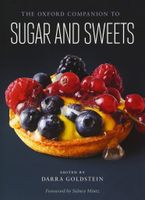🔥 Try our grilling cookbooks and save 25% on ckbk membership with code BBQ25 🔥
History
Published 2015
Legends claim that the airy mixture of meringue was named after the Swiss village of Meiringen, or even after the French Merovingian kings, but these etymologies are false, and uncertainty surrounds the origins of meringue and its name. We do know that meringue developed from the egg-white mixtures whisked with bundles of cleaned twigs that appeared in European cookery texts in the sixteenth and seventeenth centuries, generally with the addition of cream of tartar. See whisks and beaters. When sugar began to replace cream of tartar in the seventeenth century, the mixture became even lighter and was referred to as “sugar puff.” By the eighteenth century recipes close to those known today for modern meringue were already well known.
Become a Premium Member to access this page
Unlimited, ad-free access to hundreds of the world’s best cookbooks
Over 160,000 recipes with thousands more added every month
Recommended by leading chefs and food writers
Powerful search filters to match your tastes
Create collections and add reviews or private notes to any recipe
Swipe to browse each cookbook from cover-to-cover
Manage your subscription via the My Membership page
Part of
Advertisement
Related Recipes
-
-
-
-
Related Reference
-
-
-
-
Advertisement



